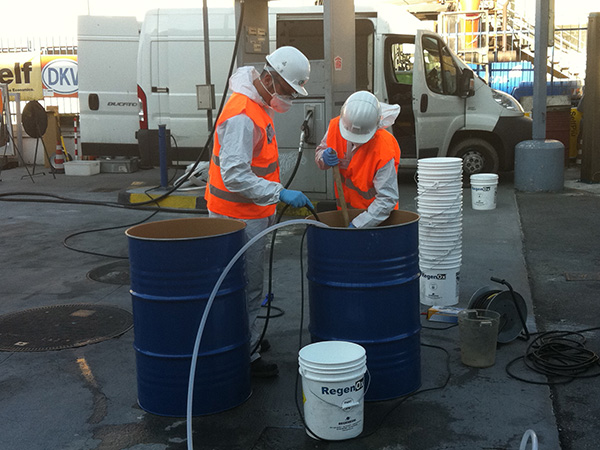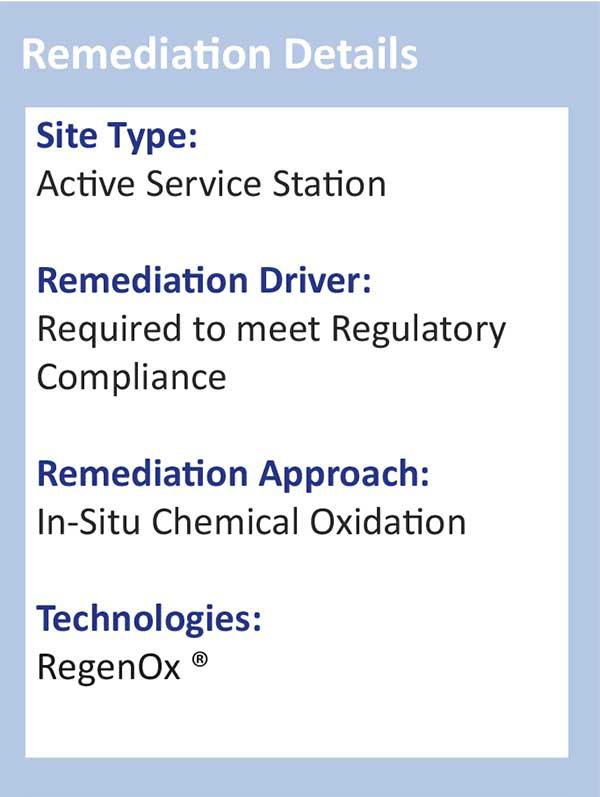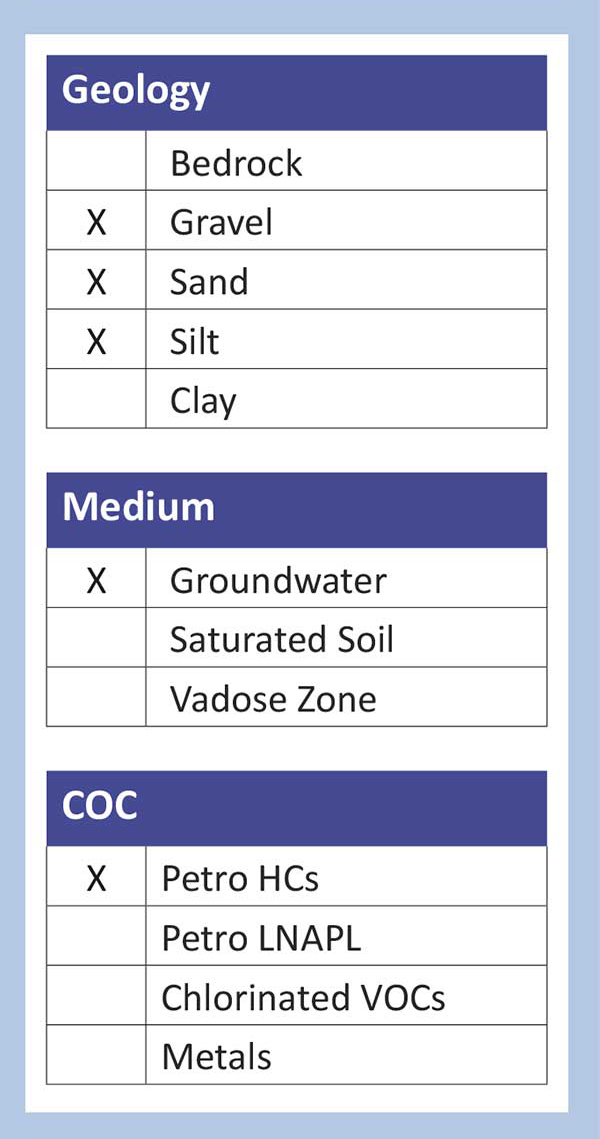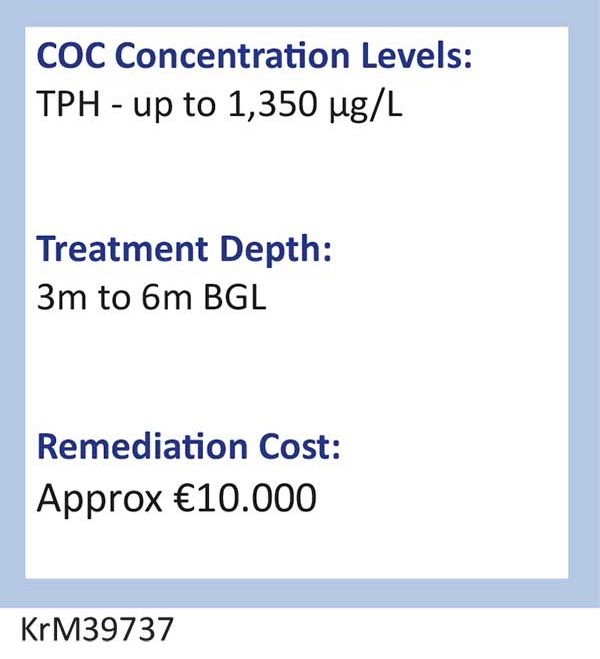In situ chemical oxidation treats TPH without mobilisation of heavy metals
Summary
Leakages from underground storage tanks (USTs) at an active petrol service station in Genova Italy, resulted in hydrocarbon groundwater contamination. Despite the removal of the leaking USTs several years ago, a small but persistent hotspot of significant TPH concentrations (including LNAPL) was present near the newly installed USTs.
As there was limited space on the 300m2 site for installation and operation of a Pump & Treat (P&T), or other physical extraction system, an in-situ approach using in situ chemical oxidation (ISCO) was the only viable option.
However, as the aquifer is in an area potentially rich in metals, related to anthropogenic material buried in the past as backfilling material, the local authority required long-term monitoring to evaluate whether variations in Eh and pH caused by ISCO agent application would result in metal mobilisation.

Treatment
In Situ chemical oxidation was deemed the most appropriate remedial method to deal with the high TPH concentrations. RegenOx was applied via well application over two campaigns, during November and December.
What’s Special?
RegenOx, a catalyzed sodium percarbonate chemical oxidant enabled remediation to proceed. It achieved effective oxidation of target contaminants, but as opposed to a persulfate or permanganate oxidants, did so without impacting sensitive infrastructure or presenting unacceptable safety concerns on an active filling station.
Monitoring is ongoing, although results two year post application show the complete destruction of TPH and no rebound has been observed.
Moreover, there was no increase in the concentration of metals.




 Americas
Americas Europe
Europe Français
Français Deutsch
Deutsch Italiano
Italiano Español
Español



